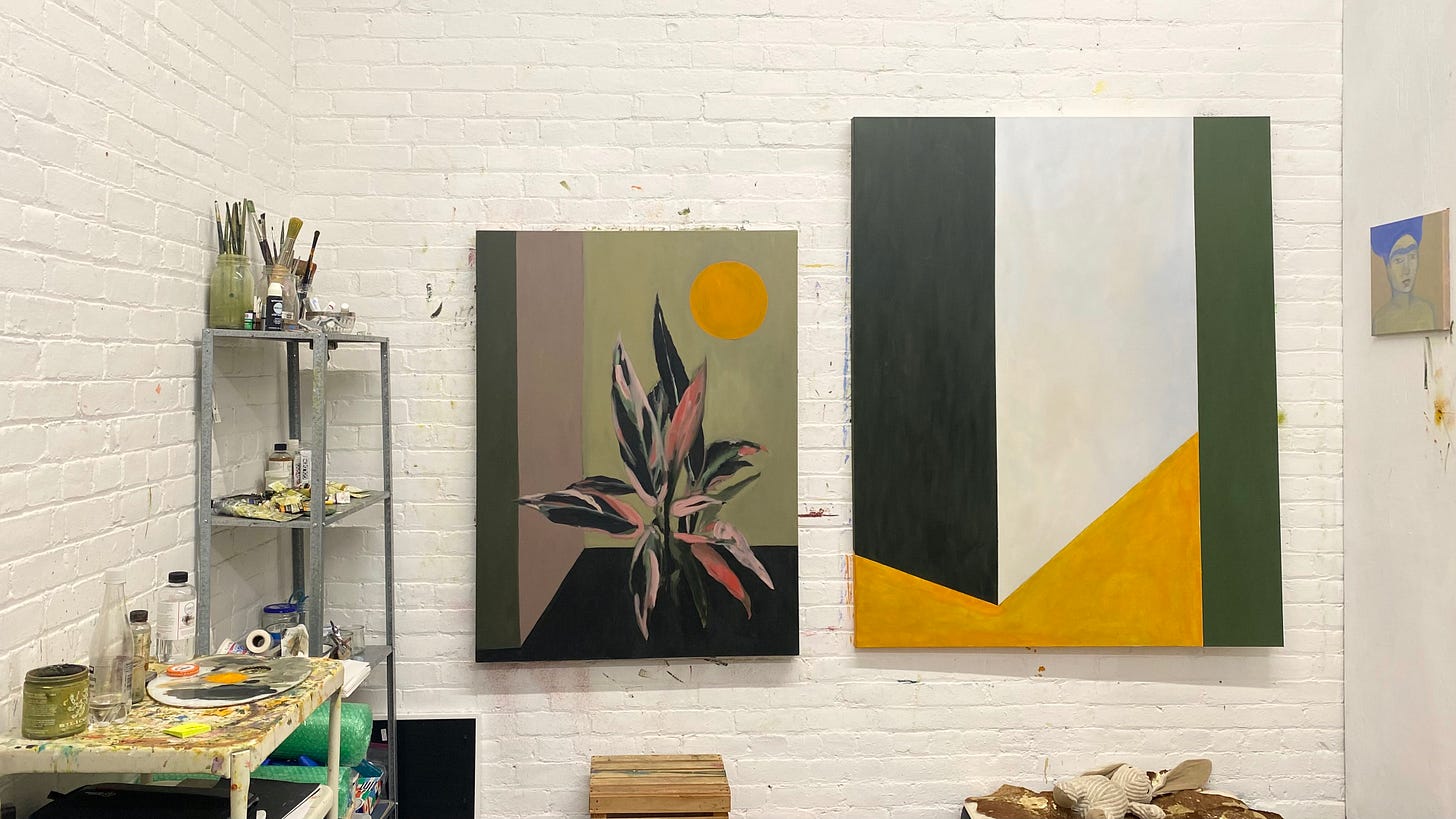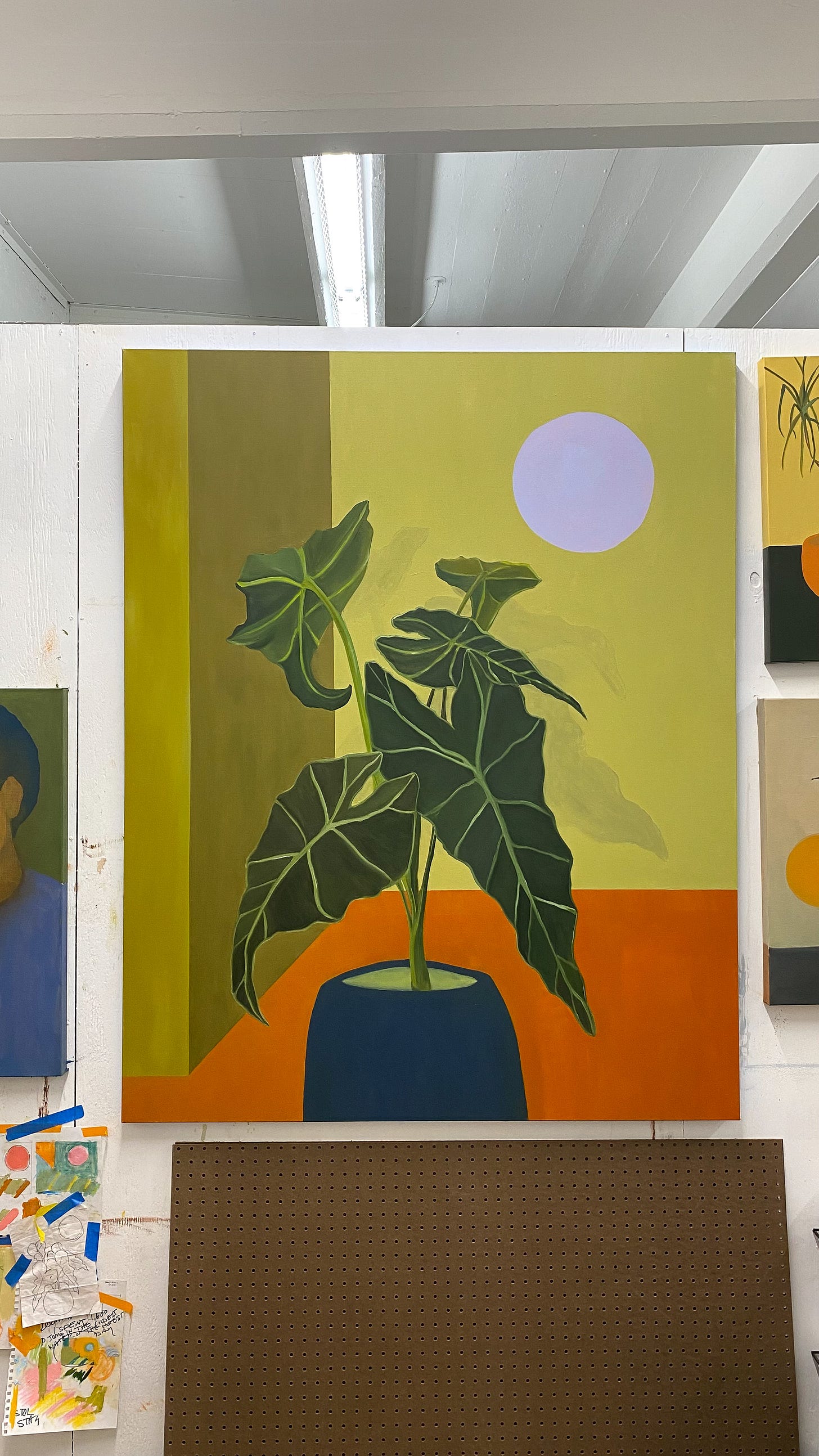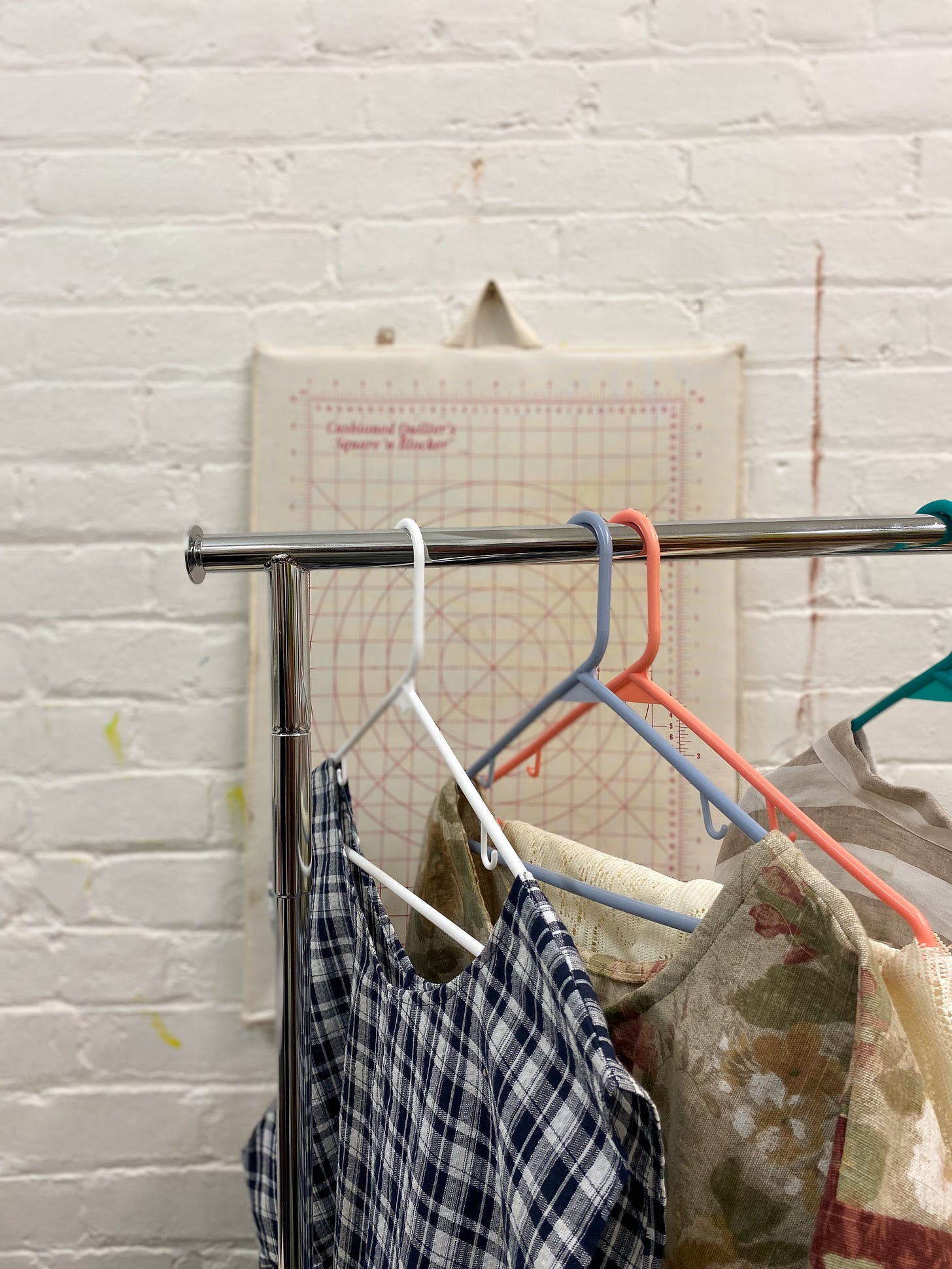Studio Visit with Nina Shahin
By now you probably know that I love looking at art, making art, thinking about art, talking about art, reading about art. As the social media landscape changes (is it ever not changing?) I’m leaning into slower collections of art and words for a smaller audience through this newsletter. This artist feature is the first in a series of conversations and studio visits with the intention to share artwork that excites me and explores what conditions must exist for artists to have long and nourishing practices. This is a critical space to give our attention in a moment where speed, shallow engagement, and expectations for artists to always be making are normalized. I have heard from many of you how difficult it can feel to be a practicing artist in this environment and so I’d like to facilitate more conversations about the lives of artists.
I know many of you in real life and you’ve supported me in a variety of ways (kind words, interviews about my work, constructive feedback, editing, purchasing art, making warm introductions, sending me to art camp as a kid) so I feel that a commitment to artists is part of the rhythm of your life. Thank you for being here and for your attention when there are so many things competing for it.
Today I’d like to introduce you to Nina Shahin, a painter based in Ypsilanti, MI.
Nina Shahin is a conceptual painter focused on the use of color, space, and shape to create memoryscapes that challenge the traditional narrative of storytelling and remembering. Their work is an homage to the custodians of oral history in their lineage, most notably their father.
I’ve long admired Nina’s work and first saw it in Spencer - a lovely restaurant in Ann Arbor. The colors, the shadows, the plants, the mystery of the rooms, the ways that they make me wonder what I would hear if I were inside them intrigued me.
Nina was gracious enough to invite me into their studio space this spring. I’ve condensed and edited this interview for clarity.
***
Describe your workspace.
It feels like a split space. I spend a lot of time in that painting corner. I always paint standing up. There's no easel, no desk. Just this sewing table. I like to draw on the floor or against the wall. The most important thing is to maintain an openness so that the space can remain versatile. I don’t want to feel like I have to pack up a bunch of projects in order to stretch canvas or to make a dress pattern.
It’s important for the floor space to remain open and to have a comfortable rug for my dog. I want to make the studio feel like it is a living breathing cohesive space, as opposed to something that serves just one purpose. Sometimes I just take those paintings down and put a projector down and watch a movie and don’t make any art.
It’s more important for it to feel safe, like home, and changeable.
Your work depicts doors, corners, plant life and rooms. What inspires your work? What draws you to these interior spaces?
The way that my paintings came to be was that my father would tell me these stories and I would wonder what was real and what was fake. Every time you remember something you remember it slightly wrong, and you’re making these variations to your favorite stories over time. Once you’re older and you have all these crazy stories they’re mostly not true. But it’s not really fun to believe that all the stories my dad told me growing up weren’t true.
None of the stories were written down. And so I started these drawings by taking the stories he would tell me that I didn’t want to forget but wasn’t able to write down. I started putting the stories into colors and made them into these rooms. To do this felt like it was doing more justice to the entire experience. The most important thing to me is to not make an enclosed room. The point is always that there’s a side to the room that you’re not seeing, or there’s a doorway to which the story continues that you cannot access. The paintings condense super long memories or expand a second or two of a long story. They are meant to feel like cornered-in moments and glimpses of something as opposed to completed spaces.
What, if anything, is constraining your art practice?
I think that to be confident in your work you have to give yourself enough time and space to make work that you don’t like and to fail over and over again. When you have such limited access to time, space and material the failures hit so much harder. You get this creative block because stress is the biggest killer for creativity. You become stressed in your space, stressed about your outside life and you get to the studio and you make something bad and then you associate more stress with the practice. It's easy to be disappointed in yourself often when you are working with such limited access to funds. That’s been the most material thing that gets in the way.
What’s the best way that people can support you and your work?
There is no level of support that I would turn down at the moment.
Critically engage with my work (interviews, studio visits)
Share my work on social media
Offer me gallery space
Buy me a house and a bigger studio
Help me pay to fix my teeth
Venmo @Nina-Shahin
Share goals you have for the future.
A goal would be to have a studio space with windows and also to be at a place where I am able to create more consistently. I want to get to a point where it is not as exhausting to tap into my creativity. With everything over the past few years it has become almost a chore to be creative. I want to be able to just communicate with my creativity better over the next few years so that I’m not associating so much shame with the things that don’t look the way I want them to.
What are you experimenting with right now?
I’ve switched my style up a little bit recently to get paintings done a little bit faster which feels good and true. I’ve started working with quilting and different media and different objects. I’m experimenting with being a crafter and maker and having more fun.
What rituals help you prepare to get in the headspace to make art?
I’m still learning and relearning healthy rituals around what creativity looks like.
I have certain sewing patterns I know that I can do within an hour. And making a pair of pants in an hour and being able to put on something that I made makes it so easy to go and paint something. There is a sense of celebrating these very small victories that makes it easier to disregard what doesn’t feel like a victory.
I also try to draw every day.
A big thank you to Nina for sharing their space and ideas with me. It was an absolute pleasure. Thank you for reading!
Also, the painting below (48” x 48”) is for sale!














